The Dramatic Rise of Esports Worldwide
The Boiling Steam Matrix Room is full of surprises. Turns out that one of our readers, @Grazen, is at in a senior leadership role at an Esports company. Since Esports are growing like crazy these days, it was a great opportunity to ask him for more details about the market and where everything is headed.

Boiling Steam: Can you tell us more about your company, OverActiveMedia, and how it fits in the Canadian or North-American Esports scene?

The entrance of the 15,000 square foot esports headquarters and training facility of OverActive Media
Adam Adamou (aka Grazenn): Sure! My name is Adam Adamou, Chief Strategy Officer, OverActive Media, including team orgs MAD Lions (League of Legends, Counter-Strike), Toronto Ultra (Call of Duty), Toronto Defiant (Overwatch). We are one of the largest Esports organizations in the world, and the only organization to be in the world’s predominant franchised leagues - League of Legends, Overwatch, Call of Duty and Counter-Strike. We also received approval recently for the design and eventual build-out of a 7,000 seat performance theatre style arena in Toronto for today’s generation of fans that we expect to complete by 2025. The venue will serve as a new home for the biggest music and entertainment acts of the world, in addition to attracting a full slate of esports events increasing over time. We’ve raised over $100m (CAD) to date from a variety of investors, including some notable names like The Weeknd, the Montreal Canadiens, bce inc., and a variety of professional athletes in the NHL and other leagues. Our principle investors are the Kimel family and Sheldon Pollack who is our chairman of the board. We are publicly listed in Toronto under the ticker symbol OAM on the TSX Venture Exchange and are also listed in the US on the OTCQB.
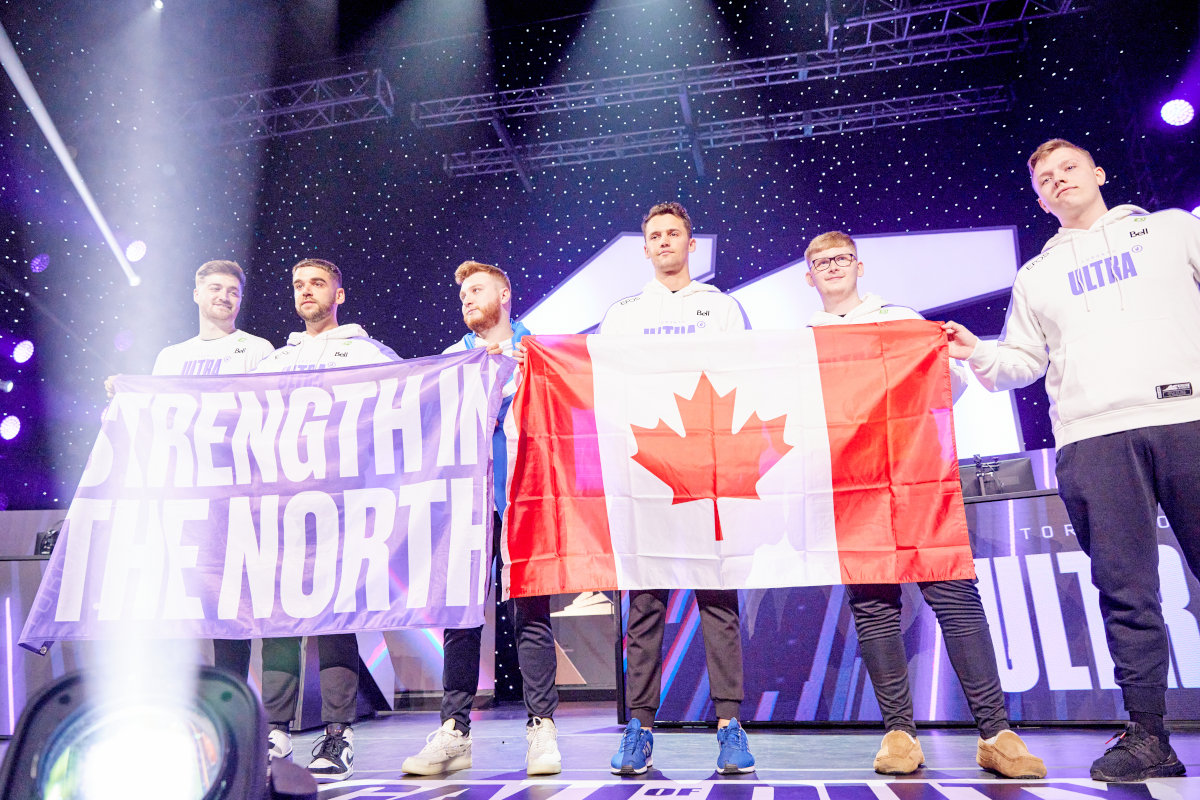
The Toronto Ultra at the Call of Duty League Championship Weekend 2021, Securing the Second Place
BS: As a chief strategy officer, what does your everyday job look like?
Adam: There’s two components to my job. First I oversee all of our team Esports. All of the coaches and managers report in to me, and we work together to build the rosters and budgets for each team. As you can imagine this can be very challenging but also very gratifying. We are an organization that builds winning teams. This year, we won back-to-back League of Legends championships, a Call of Duty major, and had nominations for Coach of the Year in two different games, Rookie of the Year in two different games, Team of the Year and Esports Organization of the Year. I’m very proud of our teams!

I’m also responsible for setting the overall corporate strategy, buy vs. build decisions and mergers & acquisitions. You can say that I’m responsible for the “deal doing” - both for players and for business.
BS: How did you end up in the Esports business? Did you start as a competitive player in the first place?
Adam: I started as a venture capitalist and life long gamer and transitioned into Esports when I saw that my “Gen Z” kids didn’t watch the traditional sports that I grew up watching and were consuming content on Twitch and YouTube and following Esports players the way that I followed hockey players when I was their age. I joined up with a long-time business partner and friend of mine, Sheldon Pollack, in 2017 and we were able to put a small amount of money together to explore Esports.
After making a few early investments, in late 2018 we were able to acquire a franchise in the Overwatch league that became the Toronto Defiant in partnership with Mike and Jeff Kimel and their family holding companies. We subsequently were able to attract Chris Overholt, formerly of the Toronto Raptors, Toronto Maple Leafs, Miami Dolphins and the Canadian Olympic Committee to join us as CEO. The rest followed from there. We acquired a League of Legends franchise and branded it MAD Lions, we bought a Call of Duty franchise, the Toronto Ultra, we formed the first team-owned Counter-Strike League with Valve, we opened up a 15,000 sq. ft. head office and Esports facility in downtown Toronto and received early approval to build a 7,000 capacity performance venue set to open in 2025.

BS: Do you play any of the competitive titles? If yes, which ones do you enjoy the most?
Adam: I play all of them, badly, but I keep trying. I would say Overwatch is my favorite to play but tough to master. Overwatch and League of Legends also work well via Lutris in Linux so it makes it easier for me to play as I don’t generally use Windows or OSX. There’s of course a native Linux version of Counter-Strike but I don’t believe it’s as well optimized as the Windows version. Call of Duty isn’t playable on Linux due to the anti-cheat system used.
BS: Can you give us some insight about the economics of Esports currently? Where do the investments come from to make the business go round? What are the revenue streams (sponsporing, competitions, merch, advertising, etc) and the key expenses?
Adam: Esports is still in the very early stage of industry development and monetization but growing rapidly. The primary sources of income are revenue share from our league partners (generally the publisher owned leagues, the biggest of which are League of Legends in partnership with Riot inc., Overwatch league and Call of Duty league in partnership with Activision Blizzard); sponsorships with brand partners, prize money from winnings and merchandise sales (both digital and physical).

The biggest expenses come from team costs (player salaries, team travel, training and staffing) and operational costs (facilities, marketing, content, accounting, sales, etcetera). Most of the larger organizations are financed through venture capital / private investors (many traditional sports owners have moved into Esports) as well as more recently a few publicly listed companies such as our own, Overactive Media Corp., which is listed on the TSX Venture Exchange and in the US OTCQB.
BS: Business wise, are there very large companies nowadays behind the world of Esports, or is it mostly a fragmented market still?
Adam: It’s starting to consolidate, but it is still very fragmented and there will likely be additional consolidation. In the West (excluding APAC) there are probably ten large organizations now and a greater number of mid level players plus a huge number of smaller players. In the APAC region there’s probably the same number of large orgs but a greater number of medium and smaller organizations. it’s a global industry now with hundreds of competitors and lots of start-ups.
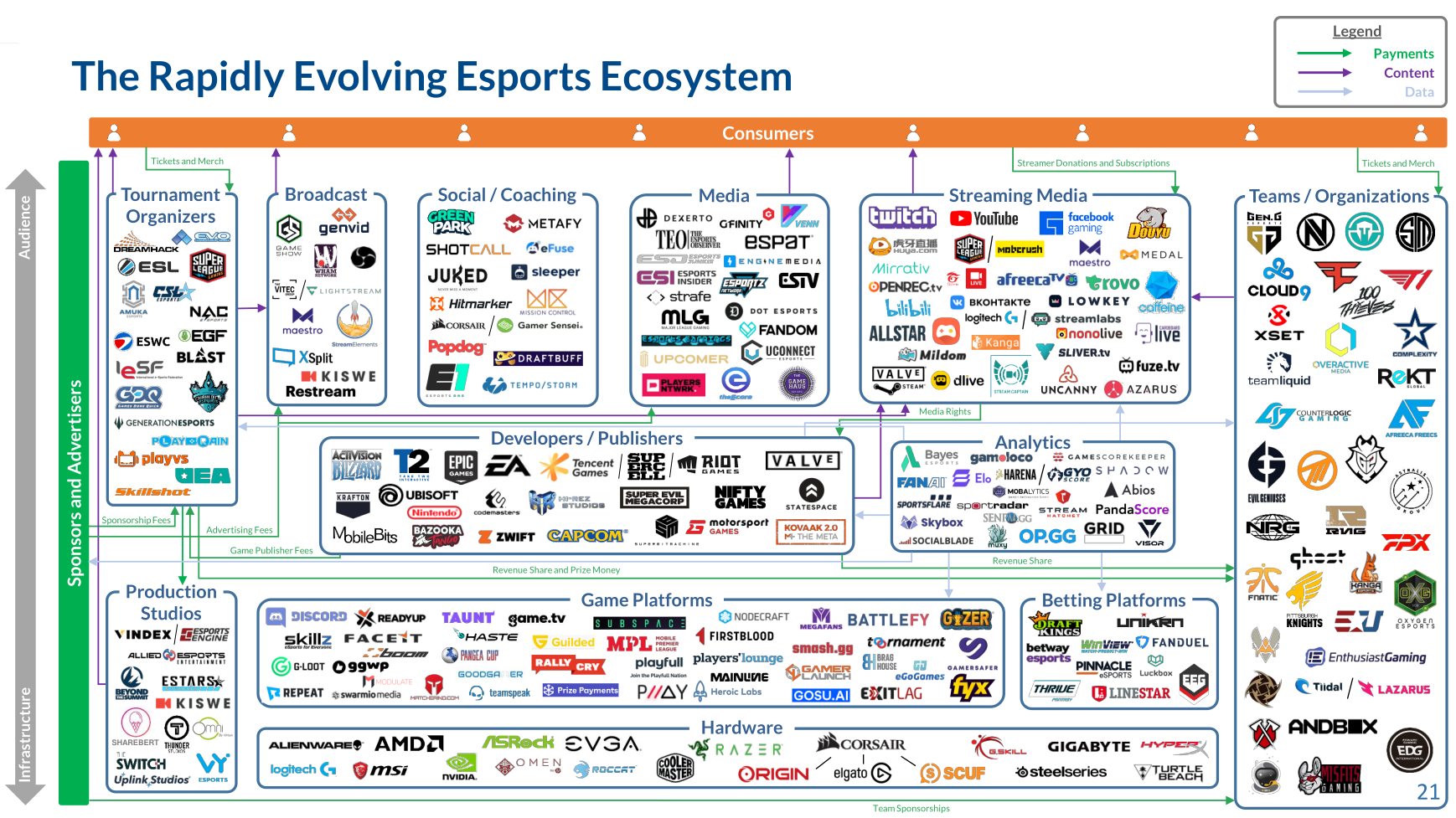
BS: How has the Esports scene grown over the years? Not just in terms of revenue, but audience-wise?
Adam: The audience has grown dramatically and continues to grow at double digit rates every year. Every one of our leagues had record viewership in 2021. Esports is now second only to Formula 1 in terms of global viewership. It’s bigger than the Super Bowl or any other single sporting event. League of Legends is among the biggest sports (not just Esports) in the world right now. Counter-Strike isn’t far behind. It really is sports for today’s generation of fans.
BS: Who decides what the next big title for Esports is going to be? Is it simply down to the game’s popularity among gamers in general, or are there specific criteria that need to be considered for a proper integration into the Esports scene?
Adam: Esports has always been counterculture, and the earliest Esports where determined by the players getting together, first in Korea, to connect their PC’s together to play the first true Esport - Starcraft. In many ways these early days are similar to the early days of hip hop music - an urban, community led movement that found the developers and game publishers on the outside wondering what was going on! Today it has certainly professionalized (just like hip hop) and major publishers like Riot and Activision Blizzard are leading the way with franchised leagues similar in structure to the NFL or the NBA with large expansion fees and permanent, professional management.
Because the IP is owned by the game publisher, it’s really impossible for an Esport industry to exist without support from the publisher, and that support comes in many ways, including the franchised leagues that I mentioned, but also others like Valve which takes a hands-off approach but supports it with it’s DOTA pass and Counter-Strike eco-system, and then other publishers that offload the production third-party tournament organizers. The one major publisher absent from the market is Nintendo, which sometimes tolerates Esports, but is also often known to shut tournaments down. (EDIT: as of the past few days, Nintendo has now sought a partnership with Panda Global for Super Smash Bros. starting next year – this has certainly been an usual turn for them!)
BS: Many of us have the image that the Esports scene is mainly tied to the PC platform – is this true, or is the console scene also a thing when it comes to Esports?
Adam: Yes, most major Esports are on PC these days. There are a few that were on console at one time (Call of Duty, Halo) but with the expansion of these games on to PC, the additional performance plus greater control over the network infrastructure (on consoles you are required to use PSN or XBL which can sometimes cause problems). There are some fighting games that are still on console, particularly Super Smash Brothers, but as I said Nintendo sometimes tolerates Esports at best and Nintendo games aren’t available on PC.
BS: Esports participants are typically fairly young and tend to have a short career (please correct if this is a stereotype). What do they typically do once they retire from Esports as players? Do they find jobs within the Esports/gaming industry, or become content creators?
Adam: You are correct! Playing at the highest level in Esports is probably more challenging than playing at the highest level in professional sports because the game is democratized and more accessible to more players globally. It’s a physical expression of a cognitive function and by the time a player hits their mid-twenties some of those cognitive abilities begin to deteriorate and those younger 16, 17 or 18 year-olds are hungry to take their place. There are a few players in their late twenties or older thirties but certainly those are exceptions. Pro player careers tend to average about five years in my estimation.
Post their gaming career, some of the more popular players transition into the streamer / influencer space, others can move into being part of the broadcast team, coaching or team management. some started their own Esports orgs and have had great success as owners as well. More commonly however, retired players often go back to school to finish their studies, since many put their schooling on hold to focus on their gaming career, and can now return to their regularly scheduled life.
BS: Are VR-based sports going to become a thing in the future?
Adam: There’s a few start-ups that are exploring VR Esports but nothing really major has come together yet. Generally the extra processing power of modern PC’s is used to drive higher frame rates rather than to push graphical power or VR which has high PC requirements. I am skeptical that a large market will evolve for VR Esports but it’s difficult to say right now with things developing so rapidly.
BS: How relevant are live audience Esports events vs. online streaming of Esports events nowadays? How has COVID19 changed things, and will things return to what they were before COVID19 at some point?
Adam: Live events are the life-blood of Esports, you can’t replace the excitement of attending a major tournament in front of tens of thousands of people, and the online viewing experience of a live event with the cheering and the excitement is hard to replace. Having said that, when COVID hit Esports transitioned easily and quickly to an online-only world and it didn’t miss a beat.

While other forms of entertainment (movies, television, traditional sports) paused their production, Esports continued, grew it’s viewership throughout the pandemic, and is now coming out of the pandemic stronger than ever.
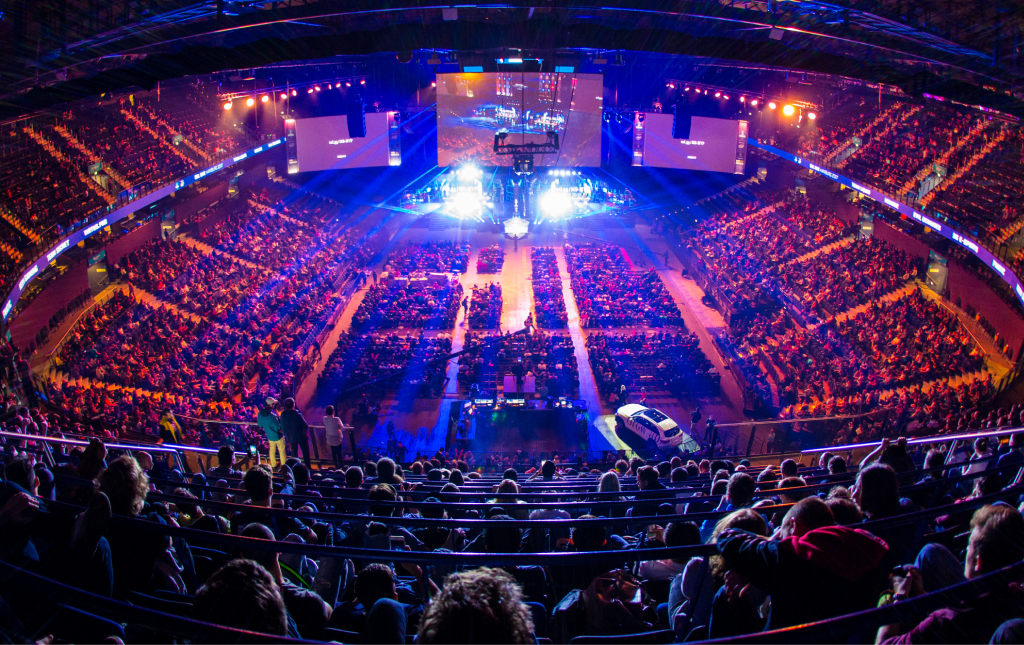
BS: While Esports as a scene is fairly well known amongst gamers, I feel it has not achieved some kind of mainstream appeal yet. What do you think is needed to get there?
Adam: It depends on how you define mainstream and it also depends on the game and the community involved. The primary demographic for Esports is what we refer to as generation z (18-25 year olds) followed by millennials, generation alpha (those born after 2008 or so, the iphone generation) followed by the older generations. There were over 4MM viewers of the League of Legends Championship on western streaming networks and probably another 100m watching in the APAC region. I would say that’s very mainstream, particularly in the Asian markets. The penetration of Esports into certain markets, say China or South Korea or Denmark for example, is very mainstream and in those countries Esports is either first or second in terms of viewership across all sports.
In other markets the penetration is more limited but it’s growing. What is needed is time. The average viewer of an Overwatch League game is about 24 years old, and the viewership is growing rapidly (there were over 1.2M viewers globally for the Overwatch League Championship). The average age for the NFL, NBA, NHL, or MLB is over 40, getting older, and is facing declining viewership. For golf or the Olympics the average viewer is over 50. As the demographics shift and the Esports demographic moves through the curve, they, their peers, and eventually their children will be more comfortable with Esports and a digital life style than the demographics that they are replacing. My kids are “gen z’s” and they know more about Overwatch and Counter-Strike than they do about football and basketball. I don’t see that changing as they get older.
The Toronto Defiant, the OverActive Media Overwatch League franchise
BS: Are there clear differences between countries in terms of Esports practices or business models (I know that in Japan the Esports scene is constrained by the fact that monetary incentives are strictly limited to small amounts, for example).
Adam: Broadly speaking, by population size, Esports is biggest in the APAC countries (all of them aside from Japan as you mentioned) and particularly in Korea and China with a great deal of interest and participation in mobile Esports as well. In the west the Scandinavian countries of Europe have a high concentration of Esports talent, followed by Europe and the UK. North America tends to lag Europe in some Esports (like League of Legends or Counter-Strike) but is ahead in others like Call of Duty and Valorant. In terms of business practices, the franchised leagues that I mentioned above (League of Legends, Call of Duty, Overwatch) offer the most sustainable business model in the West, largely driven by the direct participation and investment of the publisher into the Esports leagues.
These come at a cost however - a franchise in any one of these leagues will set you back over $30m (and more in most cases). There’s a number of franchised mobile leagues in Asia as well that are doing quite well. In other leagues, tournament operators are granted a licence from the game publisher (say Valve or Epic or Microsoft) to operate the league. These leagues generally are driven by the prize money and are less appealing to us because that’s not a dependable form of revenue. By outsourcing their leagues, the game publisher is also signalling that they are less interested in investing in Esports so that’s a concern for us as well. The benefit perhaps is that there generally aren’t franchise fees to pay, but the offset is that there’s generally less or no revenue sharing, and also much more competition for sponsors since there are more teams involved in an ecosystem that is open for anyone.
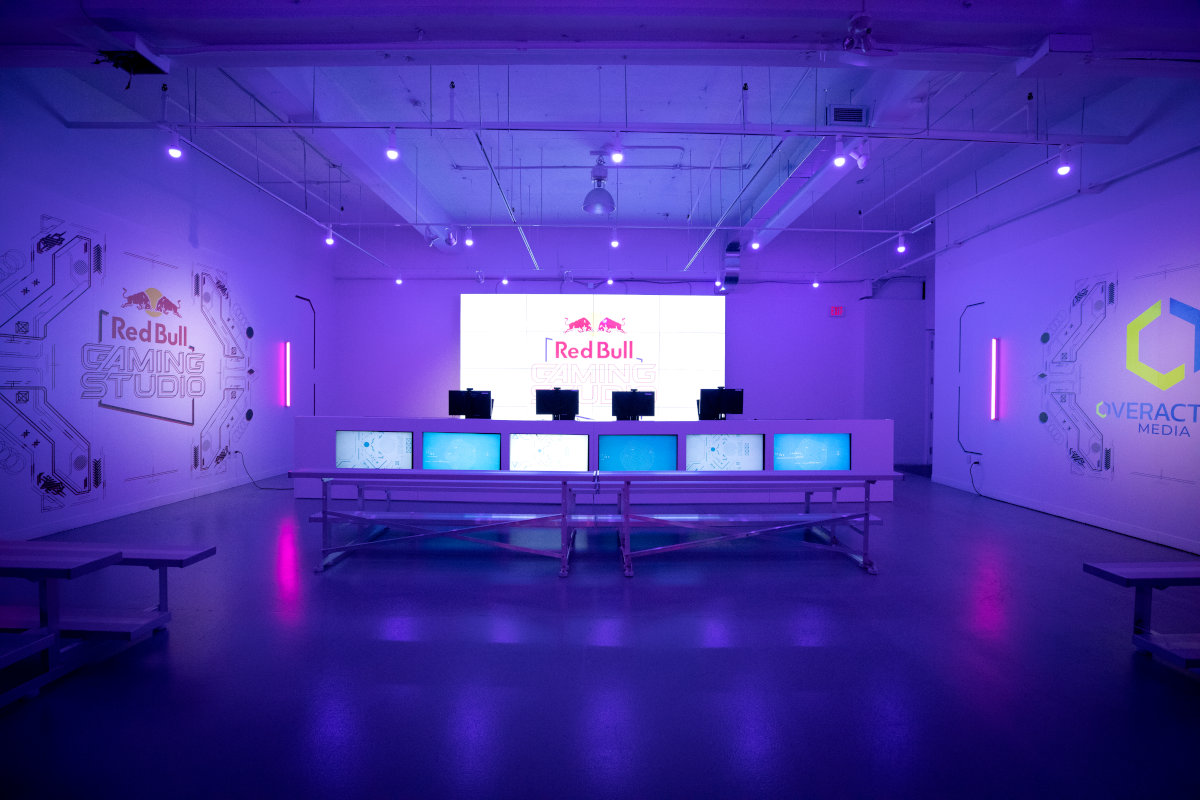
The Red Bull Gaming Studio: this space is used for competition for Toronto Ultra and Toronto Defiant, and for community and partner events.
BS: When it comes to competitive games, is there any Linux presence at all? Or is Windows a de facto standard as the gaming environment needs to be controlled and unified?
Adam: No Linux presence to my knowledge – unless you consider Android to be Linux enough to mention, which is the exclusive OS for mobile Esports. You are correct in your reasoning – there’s various anti-cheat and other protocols that need to be enabled, including connections to various third party services, broadcast and publisher assets and unifying around Windows, which is the native platform for desktop gaming is the obvious solution.
BS: Amid the controversies that Activision has had over the past few years, how is the viewership of games like Overwatch? Is it slowly declining or has it stayed the same?
Adam: We are deeply saddened by the controversies surrounding Activision Blizzard. We support the Activision employees for speaking out and seeking positive change. We know many of the people at Activision Blizzard both on the developer and Esports sides, and it’s hardest on them because they are passionate about what they do, and they love their jobs and the community. We think first about them and their welfare, both professionally and mentally. I don’t know that we can measure the impact of these issues on the viewership or the player base. Viewership is growing for Esports, which is of course a separate entity, but we don’t know if it would have been even better without these controversies. Whatever the case, we support those voices that have spoken out or are encouraging a change in the culture.
BS: Are there such things like “transfers of high-value players” between Esports team owners, just like we see in other team sports globally? Or are contracts made in a different way, at the team level?
Adam: Yes, there are transfers in Esports across all of the games that we’re involved in and in some of the games these transfers are now reaching into the seven figures in US/EU as well as in China and Korea.
BS: Are there competitive players who happen to be very good (as in top level) at several games at the same time? Or is that rather rare?
Adam: At the highest levels of pro-Esports, players focus on one game at a time. The level of competition plus the amount of time required for practicing, scrimming, strategy, physical and mental conditioning andthe long season schedules make it pretty well impossible to have a “Bo Jackson” of Esports. Having said that, there are players that have switched games to play competitively at the highest level. Typically, it’s between games that are mechanically similar - so shooters like Counter-Strike to shooters like Valorant, or controller-based games like Halo to Call of Duty.
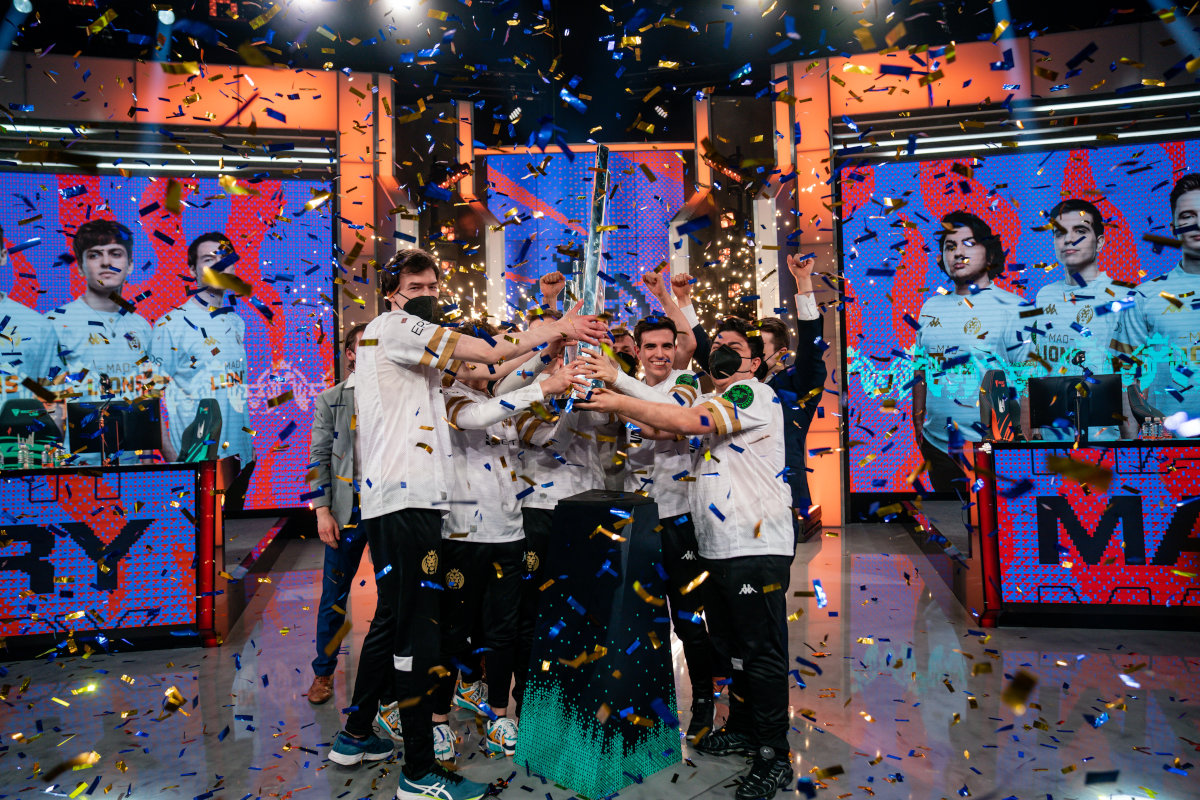
The MAD Lions (photo credit Riot Games)
BS: How do you see the market for Esports changing over the next 5 years? Is it just going to grow bigger but stay more or less the same in nature, or will it change/expand in new areas that are barely visible right now?
Adam: I see the trajectory of Esports being similar to the trajectory of hip-hop music. Hip-hop started in the back alleys of New York and Los Angeles and by the eighties we were seeing the first stars like run DMC. As we moved into the 1990’s we saw new stars emerge like Eminem and today it is the single most dominant form of music for the masses. Esports today is at the equivalent of the run DMC stage. We are nearing the equivalent of the 1990’s today and COVID has helped to accelerate the movement. I have little doubt that Esports will be to sports what hip hop is to music. Whether that’s in five or ten years, it’s difficult to know, but that’s the trajectory that we are on.

OverActive Media’s performance venue, projected for completion in 2025
Many thanks to Grazenn/Adam for his availability to answer our questions! Pictures from OverActive Media venues and teams were kindly provided by OverActive Media for illustration. Note that in this article several charts are taken from the AGC Esports Report from May-2021.
